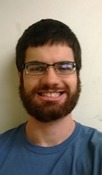Program Information
A Novel Sub-Pixel MTF Calculation Algorithm for Arbitrarily Shaped QA Phantoms
A Sibley*, R Wiersma , The University of Chicago, Chicago, IL
Presentations
SU-E-T-22 Sunday 3:00PM - 6:00PM Room: Exhibit HallPurpose: Measurement of MV, kV, and CBCT imager resolution is recommended by AAPM Task Group 142 for commissioning and quality assurance. A sub-pixel modulation transfer function (MTF) calculation algorithm was formulated for use with arbitrary shaped phantoms such as circular, ring, or rectangular shapes. This allows resolution to be measured on many commonly available phantoms such as the MV Las Vegas (square), kV Leeds (ring), and CBCT Catphan (circular).
Methods: The algorithm was implemented in Python and takes the Laplacian of a phantom edge profile. The zero crossing of the Laplacian corresponds to the location of the edge. A 6th degree polynomial spline fitted to the Laplacian was used to interpolate the sub-pixel position corresponding to the zero crossing of the Laplacian. Testing of the algorithm was performed on a square Las Vegas EPID phantom image with a pixel resolution of .784 mm. A linear fit was performed to the sub-pixel localizations for each of the 4 edges of the Las Vegas phantom. This linear fit was taken to be the true location of the edges. This sub-pixel localization allowed construction of a sub-pixel ESF, which is then differentiated to obtain an LSF. The fast Fourier transform of the LSF is taken to obtain the MTF. A Hann window is also applied to the LSF. The MTF was normalized to its zero frequency.
Results: The standard deviation from the linear fit for all sub-pixel localizations was 0.12 pixels or .09 mm. An average MTF was produced corresponding to crossings of the 4 edges of our Las Vegas phantom.
Conclusion: Our sub-pixel edge localization allows computation of the MTF for an arbitrarily rotated Las Vegas phantom. Simple modifications to this algorithm would allow sub-pixel MTF calculation for arbitrarily rotated circular phantoms, ring phantoms, or any other potential phantom shape.
Funding Support, Disclosures, and Conflict of Interest: Research was partially funded by NIH Grant T32 EB002103-21 from NIBIB. Contents are solely the responsibility of the authors and do not necessarily represent the official views of the NIBIB or NIH.
Contact Email:


